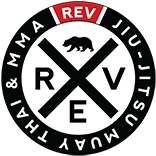Progression in Brazilian Jiu-Jitsu – Black Belt
This is a continual of the last article.
Black Belt
This is the belt where a person focuses his training on counters and placing his or her signature on the art. First, let’s talk about the signature. Some black belts develop an affinity for leg locks (like myself). Others tend to focus on throws or take downs. Some are exceptional at arm locks. While others are magicians at collar chokes. This is also the belt where you really begin to refine and redefine the art. Brazilian Jiu Jitsu takes on a more personal look to it. The new black belt begins to realize that there’s more than one way to skin a cat. He also begin to notice how certain things work for some people while others don’t. (Now, let me qualify that last statement: all of these things apply to the black belt who is still refining, growing, learning and adapting. They do not apply to the black belt who is stuck in his old ways, paralyzed by his resistance to change!)
At the black belt level, the learning process starts over again. If a new black belt is honest with him or herself, they realize they know very little about their chosen art. They will also know that there is a difference between a new black belt and a black belt who has consistently been training “as a black belt” for the past ten years. For example, I am a relatively new black belt, someone you might call “a white belt amongst other black belts.” I’ve had my black belt for two years now. Then there’s Royler Gracie. He’s had his black belt for several years. As a matter of fact, he had his black belt before I even thought about Brazilian Jiu Jitsu. Plus, he has so many more hundreds of hours competing, teaching and training that there’s no way to compare my black belt with his black belt. So, as a new black belt, I am introduced to a new journey, one that is as long and hard as the one I just traveled. However, because I have already traveled a similar road, I am ready to take on this new one!
At the black belt level, a person’s technical expertise is very high. However, his ability to skillfully perform all of his technical knowledge will not be as good as some might think. The black belt will obviously have some favorite moves that he does most of the time. However, over time (if he continues to train with the same intensity as he did in the earlier belts), his skill level will continue to increase. The only thing that will be different is that his game will become much smaller. He will not concern himself with “NEW” techniques, but the refining and redefining of the old ones. He will work on the small subtle movements that will make the art much easier and more enjoyable to practice. He will begin to make smaller movements to accomplish the same objectives as the other belt. For example, to a black belt, the difference between escaping and being held down is often the difference between a hip movement of less than one inch. YES, I SAID “ONE INCH!” The black belt’s feel and sensitivity of the game is so much higher than the white, blue or even purple belt’s game. The black belt begins to move like a shadow. He flows effortlessly around his opponent’s movement and follows the path they set. He finds his opponent’s weakness and then exploits it. The game is very small and tactile!
Finally, the black belt’s knowledge and ability to execute counters will be much higher. For example, when a student performs a basic technique, the black belt is already three or four moves ahead of him. The black belt knows that for every move, there are several counters. For every counter, there are several more counters. Let me show this to you another way:
We will call the bridge and roll escape from the mount (Upa), technique “A”. Technique “A” has ten (10) counters to it:
A.1 straight arm lock
A.2 catch your balance with your head
A.3 catch your balance with your right foot
A.4 catch your balance with you left foot
A.5 catch your balance with your far arm
A.6 spin to knee on stomach
A.7 spin to side mount
A.8 turn onto your side
A.9 roll and sweep to mount
A.10 triangle
“A.1” is the first counter to technique “A”, the bridge and roll escape from the mount position. “A.1” also has ten (10) counters to it:
A.1.1 heel hook
A.1.2 sit up and crush escape
A.1.3 sit up and crush escape to knee lock
A.1.4 sit up and remove leg off face
A.1.5 sit up and spin to opposite side
A.1.6 roll over shoulder escape
A.1.7 basic elbow/knee escape
A.1.8 basic elbow/knee escape, go to the back
A.1.9 basic elbow/knee escape
A.1.10 shin
Now, do you see how I could keep going on and on with counters? I could list the ten counters for A.2 and A.3 and so on, and then I could begin to list the counters for A.1.1 and A.1.2 and so on and so on.
Do you now see and understand the progression from white to black belt? The process of becoming skilled at Brazilian Jiu Jitsu is frustrating, very time consuming and nerve racking, however, it is always rewarding!
I wish you continued success in your journey. Keep training hard and smart!






Leave a Reply
Want to join the discussion?Feel free to contribute!